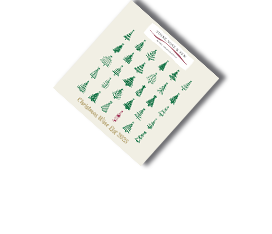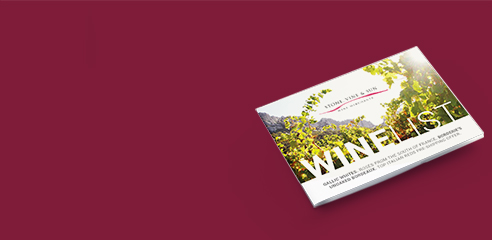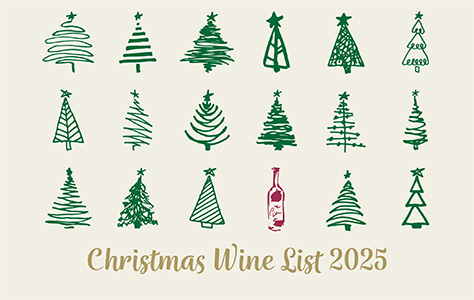Germany
Germany = Riesling.
Yes, the Germans still grow piles of Muller-Thurgau and other white varieties; and they make more than passable, if expensive, reds from Pinot Noir (= Spatburgunder), Dornfelder and even Syrah. But for centuries the most admired wines of Germany, once as highly priced as First Growth Claret, were Rieslings. Sadly history and reputation became blurred in the post-war period as growers pursued volume from lesser varieties. Now the Liebfraumilch era is over, and the focus is firmly back on quality.
The big debate now is how dry you like your wine. The Germans demand dry Riesling as an accompaniment to food. Elsewhere in the world drinkers love the traditional “noble sweet” styles, in ascending order of sweetness from Kabinett to Spatlese to Auslese and beyond.
We keep a foot in both camps, with both "trocken" and the more familiar fruity styles in our list. To try to describe these styles in terms of sweetness (i.e. Kabinett as off-dry, Spatlese medium dry) is over-simplistic. The point about these wines is the thrilling balance between natural fruit sugars and acidity. A classic German Riesling has a lovely juicy attack, fruit and minerality (which is often expressed as pepper and spice) on the mid palate and a refreshing, citrussy finish. It is ridiculous to dismiss these wines as “sweet”. Sadly too many people won’t try these wines at all, yet when they do they love them.
Kabinetts and Spatleses make the most delicious aperitifs, and the sweeter Ausleses are lovely for drinking after dinner (but not with pudding). Finally, these wines are excellent, with their appealing fruit and very low alcohol levels, for introducing teenagers to wine (we need the next generation of customers!).
A simple guide to decoding the names of the wines: the first word is usually the name of the village, but with -er added. The second is the name of the vineyard. Thus Urziger Wurzgarten translates as the spice garden vineyard at Urzig.
Our Growers:
Dr Loosen, Bernkastel, Mosel
The Loosen family mansion lies 100 metres from the river just north of Bernkastel in the Middle Mosel. Here one feels at the heart of German wine: everywhere around are historic vineyards: the Bernkasteler Lay (Lay = slate) starts at the back windows.
At their best, Rieslings from the Mosel are the ‘the most elegant wines in the world’, (Giles MacDonagh, The Financial Times, October 2001): very pale in colour, sometimes with a garland of tiny bubbles; softly perfumed; and with a quintessential lightness of body (usually 7.5-9.5 degrees of alcohol) and finesse. Here, perhaps more than anywhere else in Germany, the terroir shines through in the wine: it is fascinating to sit with Ernie Loosen and appreciate the subtleties of four Kabinetts from the same vintage but different vineyards.
Ernie Loosen is the greatest ambassador for German wine: wherever in the world a Riesling tasting is being held, he will be there. Restlessly energetic, Schumacher-like behind the wheel (terrifying on precipitous mountain roads!) articulate and passionate, he leads a fascinating tour of his vineyards; from the slatey Bernkasteler Lay, low on the slope; to ancient vines on the precipitous south facing heights of the Urziger Wurzgarten, where the slate is red, giving a distinctive spice to the wine; and down to the tiny patches of vines of the Erdener Pralat, enjoying a perfect microclimate beside the river, protected by pink cliffs.
Ernie also oversees the wines at J.L.Wolf in the Pfalz, where the warm, dry conditions can deliver dry wines more comparable to those from nearby Alsace.
Helmut Dönnhoff , Oberhausen, Nahe
Is Helmut Dönnhoff the best winemaker in Germany? To meet him you wouldn’t believe it. Grey-haired and slight, he is quiet, modest and unassuming. But his wines are extraordinary, distinguished by a purity in which every individual nuance of fruit, spice and minerality can be savoured.
The countryside of the Nahe region is very different to the Mosel. Oberhausen lies on a still river amid rolling wooded hills. But when one walks the vineyards the rock is never far away. The wines here come from vineyards only a few hundred metres apart, yet geologically different: Leistenberg translates as the slate mountain; the Kupfergrube (the copper mine), by tradition probably the most famous vineyard in the whole of the Nahe, is on 100% volcanic red soil, giving a distinctive peppery nuance; Hermannshohle (Hermann’s cave) is slatewith some sandstone and volcanic elements. There Donnhoff has 60 year old vines.
Johannes Leitz, Rudesheim, Rheingau
A modest young man, but what a talent! From steep, south-facing vineyards on the north side of the Rhine at the western end of the Rheingau, he turns out cracking wines, with more weight than most Mosels but equally fine balance.




